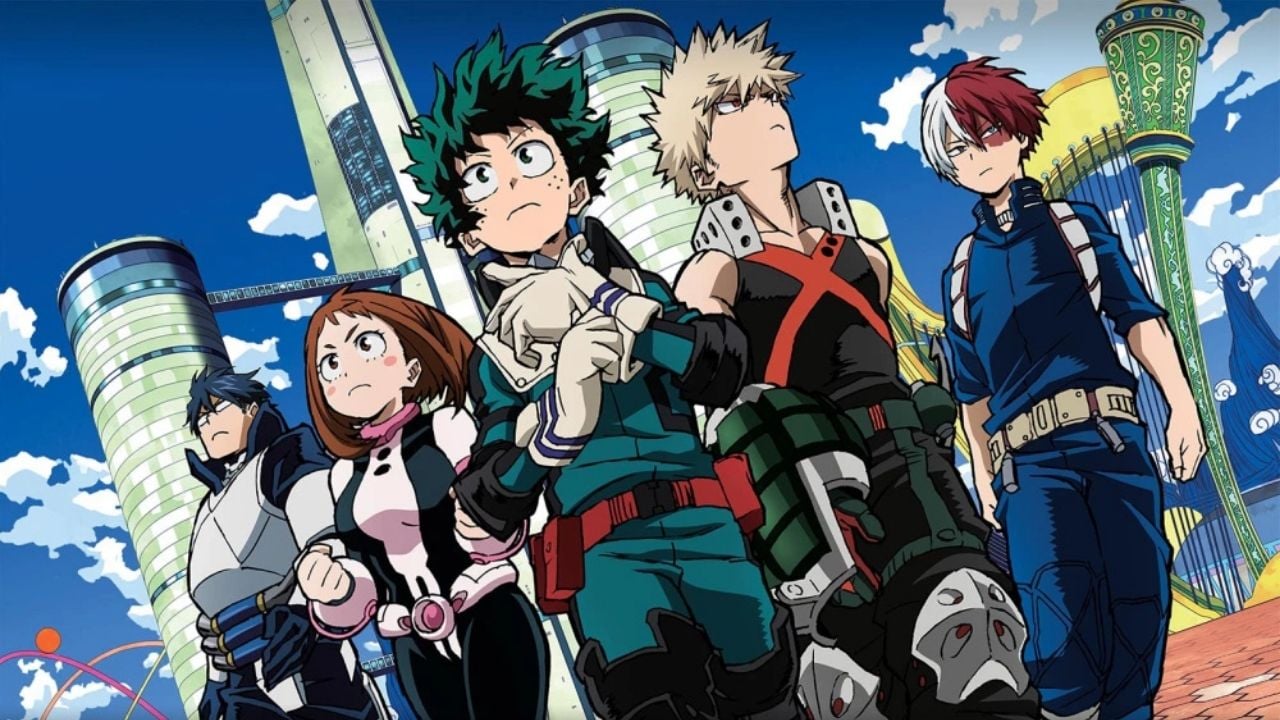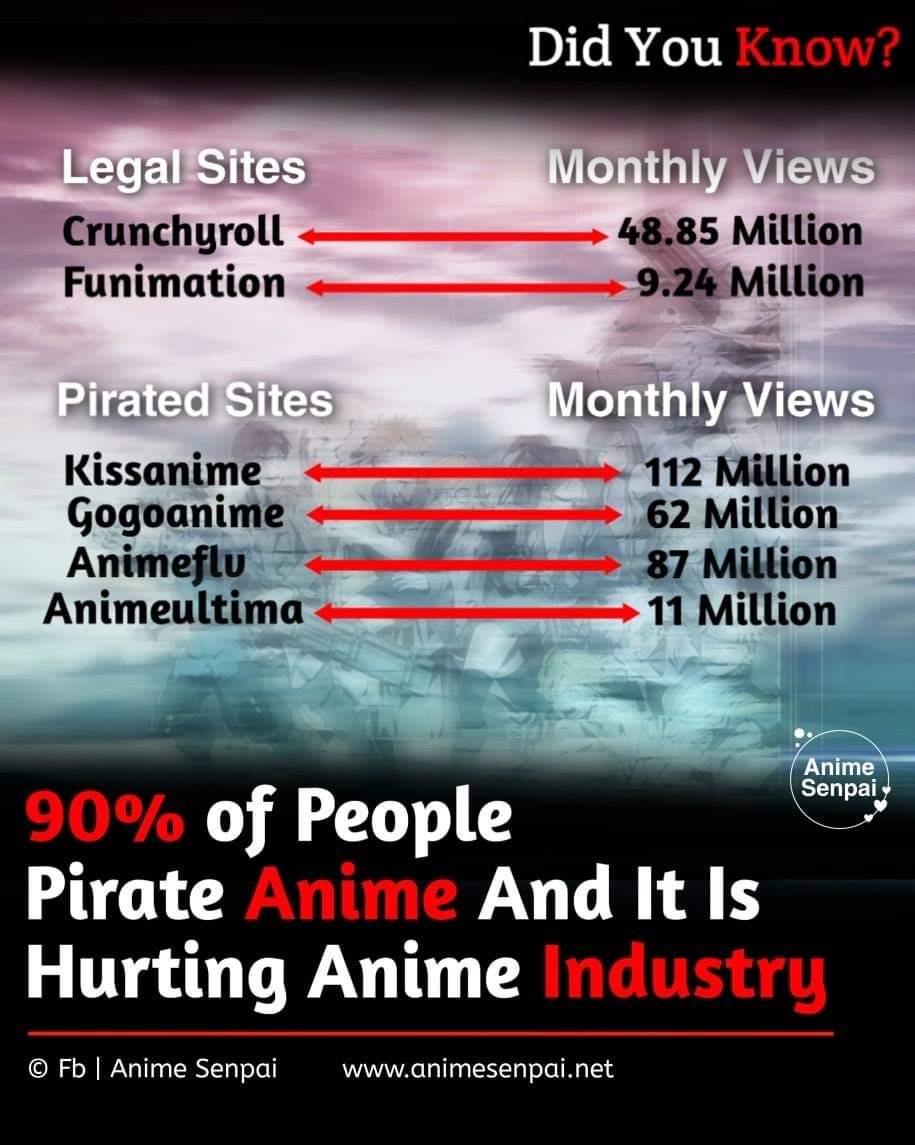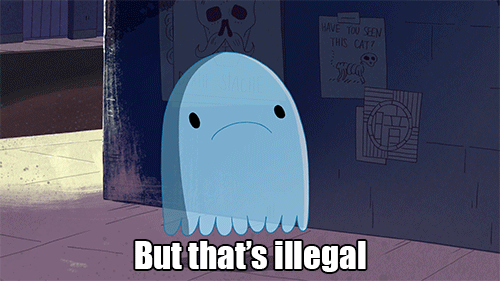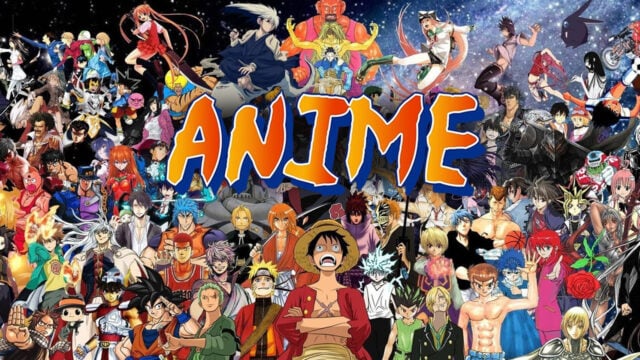When I was a child, I watched all available animes I could find on television using a network called “Animax” in my region.
Almost every day after school, I sit in front of the television and watch several anime shows airing during the 5 pm to 7 pm time blocks.
As I got older and school & work became prominent, I don’t have the luxury anymore to watch animes at those specific times in front of the television.
In my case, I’d rather watch them during my free time on Netflix – whether on the Netflix app that’s installed on my phone when commuting to work, or through a laptop by visiting the Crunchyroll website during midday on the weekends.
It became easier nowadays because of several streaming platforms such as FUNimation and Crunchyroll.

Video platforms like these have been streaming anime since the early 2000s and they continue to do so even now. No sooner, Hulu and Netflix obtained licensing rights to stream some classic anime shows on their platforms.
With so many choices available on our fingertips, why do we still get news that the anime market is declining?
Read on to find out how streaming animes on illegal websites hurts the anime industry.
1. Why is it Illegal to watch anime online?
First, let’s establish this fact: it’s not illegal to watch animes online as long as the streaming services you use obtain licensing agreements to the Japanese animation studios that produce the animes.
Streaming platforms such as Netflix, Hulu, FUNimation, and Crunchyroll pay the Japanese studios licensing fees so the latter can produce more anime.
Moreover, the streaming services acquire active copyright claims so they can host anime shows on their websites. When the copyrights expire, they renew the claims by paying the studios additional licensing fees.

What is considered illegal is downloading, then uploading, then hosting the videos while the shows are under copyright protection.
The uploaders did not obtain legal permission to share videos on YouTube, or in any other illegal websites for that matter.
The Japanese animation studios and the respective manga authors of many anime series work hard together to create quality anime content.
In truth, they are the rightful owners of many copyrighted series. If they did not give their consent to download, upload, and host anime shows on a certain website, then that makes watching animes on illegal streaming services prohibited.
The Japanese animation studios and the original authors are stripped of their rights to earn on their creative works. They can’t monetize on illegal websites because they didn’t form business partnerships with the uploaders to begin with.
There are no structures or rules to follow, which makes it easy for viewers to leech off the Japanese animation industry.
Leeching off animes is another reason why several new Japanese animation studios cannot enter the anime market. They know that the biggest problems that existing ones face every year is piracy.
The stats on the Anime Senpai image included in this blog shows some interesting facts: “90% of people pirate anime”.

This fact alone implies that the revenue from legal streaming sites comes from only 10% of the anime-viewing population. Crunchyroll and FUNimation have combined monthly views of over 57 million.
However, pirated sites like Kissanime, Gogoanime, Animeflu, and Animeultima have combined monthly views of over 272 million!
Let’s say that paying members of legal sites averages to about 57 million views ÷ 2 = 29 million users.
When we multiply 29 million users by the $8 monthly subscription that legal streaming sites offer to its paying users, that would amount to $232 million revenues per month (or ~$2.8 trillion per year).
Compare that to 272 million views ÷ 2 = 136 million average users of pirated sites. This means that the Japanese anime industry is losing out on 136 million x $8/mo = $1,088,000 subscription revenues (or ~$13.05 trillion per year).
That’s a lot of money that the Japanese animation studios are losing out! No wonder piracy is hurting the anime industry!
Illegal websites hurt the anime market by taking away the full potential income that the animators and original authors could have earned to create more animes and generate more ideas.
Potential manga authors entering the Japanese manga industry are also hurt because their creative works might not be protected by copyright.
Alternatively, their mangas could also be pirated the same way that animation shows are streamed illegally. If their works are not monetized, then animators and manga creators think that it’s better to switch jobs where higher salaries could be earned.
These are some reasons why I subscribe to Netflix and Crunchyroll to support the creators – it fosters economic growth among Japanese animation studios and mangakas.
2. Why you should Consider Watching from Legal Streaming Platforms only and Support the Creators…
There are several reasons why anime viewers should consider watching only from legal platforms. The quality and speed of uploading the English translations of anime shows is one reason, while other reasons include ease of access.
Official translations of legal websites are the result of a professional’s hard work.
For example, some FUNimation staff have been working in the anime industry since the company’s establishment since the early 2000s.
Hence, the money that monthly subscribers pay to FUNimation goes to translators, English dubbed voice actors/actresses, and animation directors.
These professionals who have obtained real-life work experience for years while working in a variety of anime shows!
They also make sure that the English subtitles on the Japanese anime shows are translated speedily, faithfully, and closely as possible like the dialogues in the manga.
They take minor liberties sometime during their translation work. But this is understandable because they must localize Japanese anime shows to an English-speaking culture/audience.
Illegal websites, on the other hand, provide unofficial translations and do not rigidly review nor update the subtitles for an English-speaking audience.
The staff working on unofficial translations are not paid, resulting in poor quality of anime videos hosted on illegal sites. Unofficial translations are often not finished on time because the unpaid people working on them have regular school and working lives.
This is the very reason why some shows on illegal platforms are very slow and not updated.
Another reason why you should consider watching anime shows legally is ease of access. Legal streaming anime websites are easy to find on the net.
When you type Crunchyroll, FUNimation, Hulu, Netflix, and other legal platforms on Google, they often appear on the top search results.
It’s because these organizations prefer advertising their subscription services to potential members and existing users. On the other hand, illegal platforms have to hide themselves.
When you type the domains of their websites, it doesn’t end in “.com” “.org” or “.net”. They must take precautions and hide their anime sites because they don’t want Japanese animation studios to take them down.
Often, they use third-party websites to hide their illegal streaming platforms’ identities and protect their personal online identity.
The third-party websites also ensure the illegal platforms’ existence on the net is restricted to their targeted viewers (which means, it must exclude Japanese animation studios, and exclude the original authors/mangakas).
Legal platforms utilize licensing and copyright to its fullest so that a portion of the subscription revenues will return to anime distributors and the Japanese animation studios.
However, illegal sites skip these steps because business agreements and contracts are hassles for the parties involved.
If you’re curious why they are such a hassle, I’ve enumerated them in the list below:
- licensors and licensees must constantly follow up on their business dealings to ensure that each party keeps their end of the deal;
- the licensees must air anime shows on the agreed times, on specified days, and on the agreed platforms (on the legal platforms/websites only) to paying members or the subscribed users/audience;
- paying/subscribed members must be able to watch the full videos on the streaming platforms; while non-paying members, as an example, can only watch videos for free trials or only for a limited time;
- the copyright claims on anime shows must be current or active; if copyright renewals are necessary, then the copyright fees must also be paid to the anime distributors
These rules seem rigid and complex. However, they must be followed to ensure three things:
- Licensing fees are transferred to the Japanese animation studios;
- The original manga authors are paid a percentage of the fees through royalties (since their mangas were adapted into animes);
- Current or active copyright protection must exist to ensure that anime videos are legally uploaded on legal streaming websites;
Since the people hosting illegal anime videos don’t follow the above rules on licensing and copyrighting animes, the monies they earn from pop-up advertisements (unwanted advertisements which non-paying subscribers are forced to watch) neither goes to Japanese animators nor anime distributors.
Therefore, money earned on illegal platforms don’t support the creators and hinders economic growth in the industry.
3. Complications Face while Watching Anime
- Licensing – This is a big factor in the anime industry as stated above. If FUNimation, Crunchyroll, and other legal platforms do not get licensing rights to a particular anime show, their subscribed members might switch to Hulu or Netflix subscriptions. Worst, the members might stream illegal anime sites online; this is the reason why legal subscribers are dwindling in membership.
- Censorship – This is another factor to consider when watching animes legally or watching shows via subscriptions. Illegal anime sites cut content to censor lewd anime scenes in some countries. Meanwhile, legal anime sites (depending on the country that it’s being aired to) reduces or removes censorship altogether and provides uncut versions of the anime videos. After all, they have paying members; so, might as well give them the whole package – unedited clips, English-translated opening and ending songs; updated translations on English subtitles, etc.

4. Is there Actually a Good Side to Watching Anime Illegally?
The only good side I see in watching anime illegally is that it saves costs or monies in the long run because viewers do not have to pay monthly subscription fees.
In addition, if fans do not want DVDs and manga books to stack up in their closet or in the basement, then, it’s understandable why people would go to such lengths to watch animes via illegal platforms.
A third reason is that it’s also really hard to watch particular anime shows on legal sites. Legal streaming sites don’t get licenses to said shows, hence, why fans go to illegal websites.
Anime producers or studios may attribute low DVD sales to a trashy anime. They even might think that the original creators’ manga is a flop, hence, why the related manga volume sales are also declining.
At the end of the day, it’s choosing quality over quantity (or legal sites over illegal sites).
The Japanese animation studios might be thinking that the anime they produced didn’t earn much because when they aired or ran a one-cour season.
Those animes didn’t generate enough viewership or sufficient positive ratings on legal platforms. Pirated anime shows and pirated manga discouraged studios and mangakas to create new content.
To give you an example, “Kaguya-sama: Love is War” manga author Aka Akasaka says he won’t be resuming Instant Bullet, an old manga with a dark theme plot that he used to work on.
“If it doesn’t sell, why make it or even produce it?”
Aka Akasaka, Author
Kaguya-sama: Love is War is known for its comedic and light-hearted themes and has garnered over 9 million manga sales.
The author still serializes this work because the manga is earning profitably, and its two one-cour anime seasons are also well-received.
It’s almost the same story for “Fruits Basket” manga author Natsuki Takaya’s “Liselotte and Witch’s Forest”. Her Fruits Basket manga has been well received since 1998 and has garnered over 30 million readers worldwide.
But when she was publishing “Liselotte and Witch’s Forest”, it only ran for 2 years, and even put it on hiatus because of an illness.
Even though she confirmed that she doesn’t know when she will be resuming drawing manga, another possible reason why she put said series on hiatus is because it’s not making sufficient manga sales.
This is only a theory, but it’s most likely the reason why declining mangas don’t continue.
In any case, pirating hinders the economic growth and the creativity of people working in the animation and manga industry.
They know they cannot monetize pirated works which is why it’s important we legally watch the creations of animation studios and manga creators.
If manga creators can earn royalty fees after knowing that their manga sales are increasing, then, they can satisfactorily say that their hard work is worth it.
Both animators and mangakas would keep generating new ideas and content. Mangakas also get to realize that the related anime of their original manga creations is also being loved and watched, which means that the fanbase is strongly supporting their works.
5. How to Consume Anime Shows/Manga Series Legally
Here’s my complete guide on Watching Anime Legally with all the sites (free+paid) and their subscriptions.
Now that you know that illegal anime websites contain popups and malware, I recommend you support the creators by doing the following:
- Watch animes on legal streaming sites like Crunchyroll, FUNimation, HIDIVE, VRV, Hulu, Viz, Anime-planet, Amazon Instant Video, Amazon Prime Video, Netflix, Muse Asia YouTube channel (average subscription fee ranges from US$8/month to US$17/month).
- Read mangas legally by subscribing through ComicWalker, BookWalker, Crunchyroll, VizMedia, Shonen Jump (monthly fees vary, but the lowest price is $2/month).
- Buy anime standard-definition, or Blu-Ray DVDs (prices vary according to the DVD set you are purchasing).
- Buy the physical copies of the mangas (the standard price of a manga volume ranges between US$10 – US$13).
- Borrow manga volumes from your local library (especially for mangas that are difficult to find and purchase in the manga market)
- When you join r/mangaswap on Reddit, you also have the option to trade manga volumes with similar-like minded individuals; different titles come at different prices.








No Comments on Why is it Illegal to Watch Anime Online? Support the Creators!